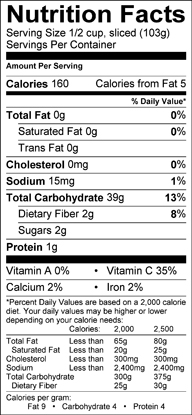Look for well-formed, similarly shaped roots that are hard and free of soft spots and bruises. The root may develop soft or moldy spots that won't affect its quality; scrape them off.
If you harvest too early it will not have a strong and spicy kick. Young leaves will have a sharp and peppery taste and can be used in salads. You can harvest before the ground freezes.
Harvest just what you want to use at a time. Wrap in a damp paper towel, place in a plastic bag, and refrigerate for several weeks, or store in a perforated plastic bag in the refrigerator for a few weeks. If you want to keep the roots longer, put them in a wooden box covered with damp sand, and keep in a cool dark place 32-40 F and they will last for a few months.
